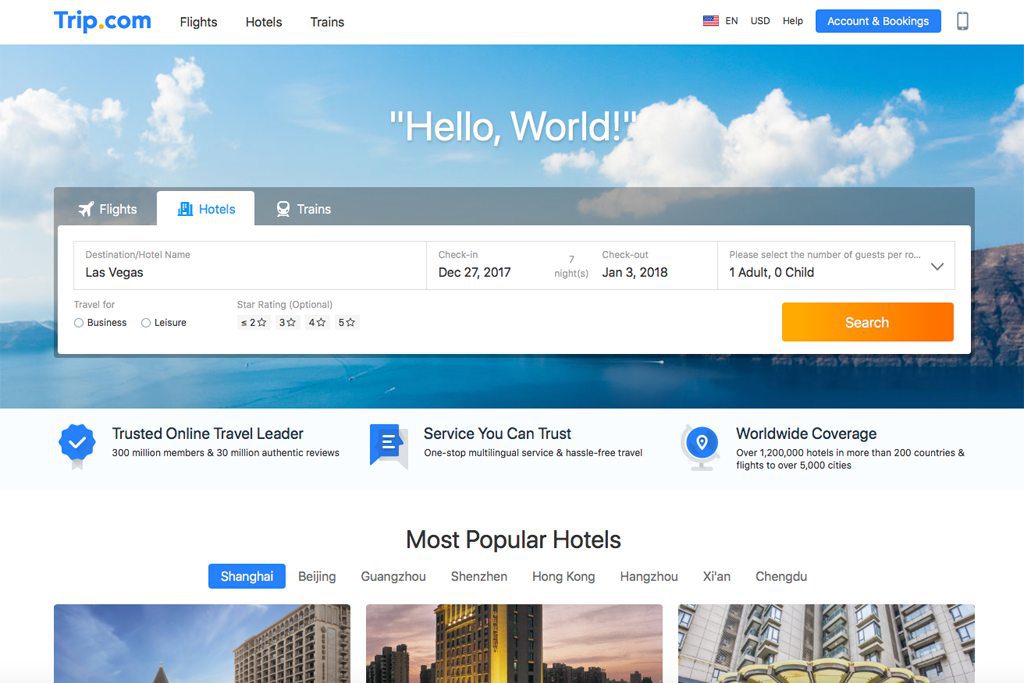Ctrip Relaunches Trip.com as Its English Language Travel Agency Brand

Skift Take
We had speculated before that Ctrip might use its newly acquired Trip.com domain for its own agency listings, displacing the travel recommendation service it recently bought. By de-emphasizing its Chinese origin, it may hope to ingratiate itself with more Western travelers.
Ctrip.com doesn't waste time. It was only at the start of this month that China’s largest online travel agency announced it acquired Trip.com domain as part of its acquisition of a San Francisco startup of the same name for an undisclosed amount.
In the last few days, Ctrip ported the travel recommendation service it acquired to a new domain, www.trip.skyscanner.com, and on Sunday it turned Trip.com into an English-language version of Ctrip's online travel agency content. The homepage format is different in some ways from the English-language version of its long-standing Ctrip.com website.
As of launch day, Trip.com's homepage is scrubbed of any reference to being Chinese-owned, although the the Trip.com About Us page says Trip.com is part of the Ctrip Gro

